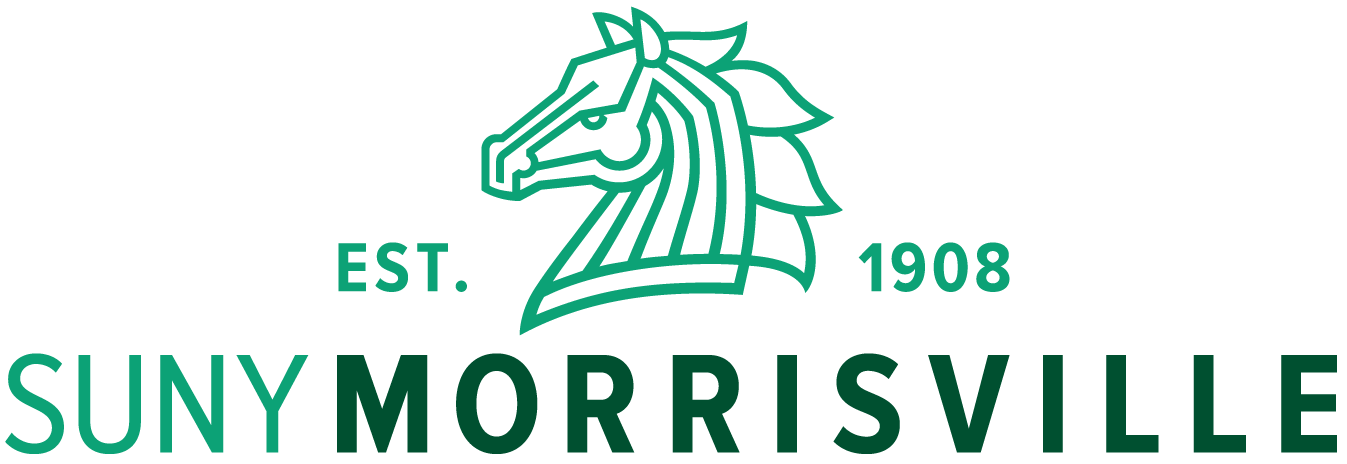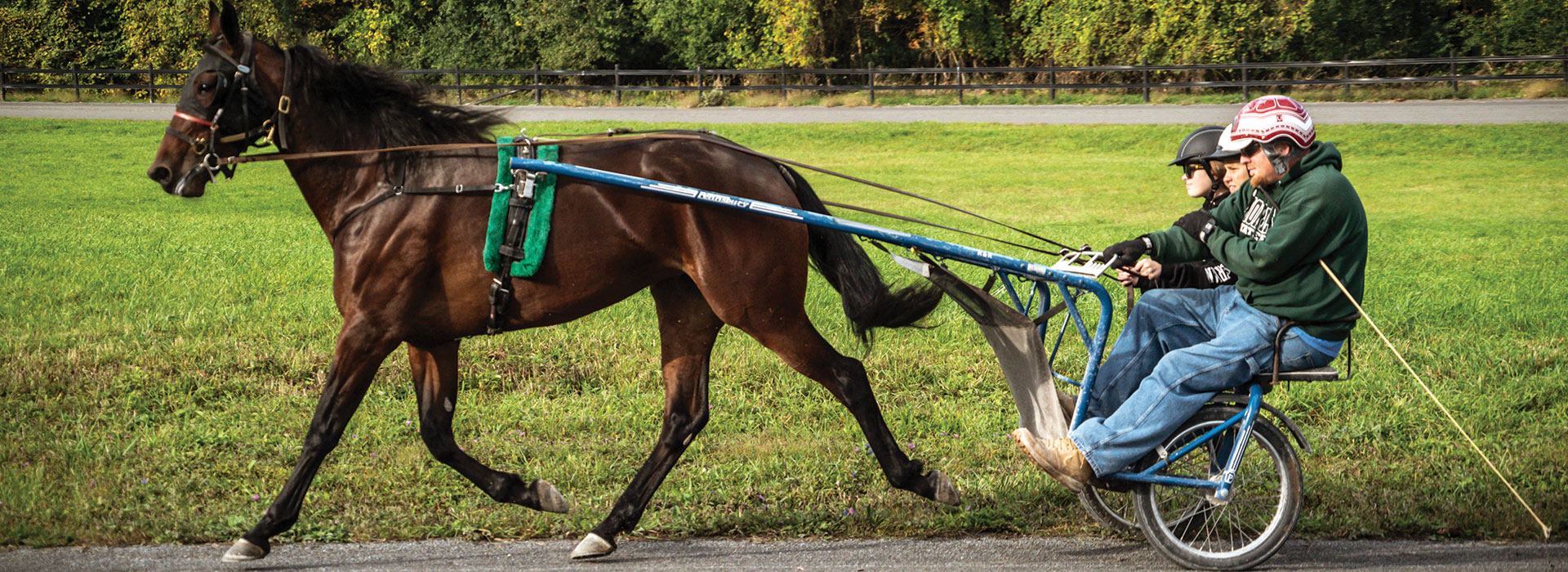Monday morning, the second week of classes, and in the Western barn, the nicker of horses and warmth of well-used leather replaces the starch of lectures and laptops.
A palomino named Trigger hangs his head over the stall door and poses for a selfie with a freshman whose experience with horses has been pretty much confined to cell phones. Down the aisle, another newly minted rider is trying to wrap the legs of a fidgety paint. A third is discovering that horses manage to get all sorts of interesting items caught in their tail.
Saddles on, cinches tightened, the beginning Western riding students throw a leg over their patient equine teachers and the work of horsemanship begins. “OK,” says associate professor Michelle Nyberg, “let’s talk about body position. You know the song about ‘head, shoulders, knees and toes?’ With riding, it’s ears, shoulders, hips and heels ... You have to be centered.”
In the outdoor arena, with a year of horsemanship behind them, assistant professor Julie Corey’s riders are practicing light hands, a balanced seat and the notion of working toward a goal with their horse.
“Sit down, sit deep,” Corey coaches from the middle of the ring. “Sink down into your saddle and see if you can create that one-two, one-two rhythm with your horse. That’s Western Pleasure 101. It all starts here today.”
Pause for a moment and rewind.
Taking it straight from the horse’s mouth, it all started here a half-century ago. What began at SUNY Morrisville in 1968 as a saddle horse program with 50 students, one barn and an indoor arena that doubled as a breeding facility, has grown into a premier equine curriculum with 300 students, dedicated breeding, training and rehabilitation facilities, and a graduation track offering a bachelor’s and two associate degrees. It’s a unique program, respected nationally for the diversity of its course offerings and the hands-on approach to learning that undergirds classroom work with practical experience.
“We introduce our students to all different areas of the industry, from riding to draft horses to breeding to rehabilitation,” said Erin Morgan-Paugh, Ph.D., chair of the Equine Science Department. “We introduce hands-on learning in every facet of the program that we can. It makes a difference. It immerses students in a real-world setting that develops and instills a work ethic that employers appreciate.”
Peek into the arena at Morrisville’s annual Standardbred yearling sale, the only one held on a college campus in New York State. The sales barn is churning with activity and, uniformed in black suits and gold vests, it is students who lead each horse in and out of the auction ring. The yearlings stand square so buyers can look them over, then take a turn around the ring. The student at the end of the lead rope has practiced this bit of choreography so often it is practically in her DNA.
Other students take on administrative roles. Some played a part in foaling and raising the seven yearlings the college consigned for this year’s sale or, as part of the Associate in Applied Science degree in equine racing management, train on the nation’s only half-mile harness racing track found on a college campus.
- Kimberley (Asher) Dougherty '02
At the Equine Rehabilitation Center, Morgan-Paugh said, students have access to the most advanced technology in the industry and perform actual treatments, working with horses on the underwater treadmill, administering laser and magnawave therapy, and learning to swim an injured horse in a pool, giving it the chance to exercise without putting pressure on its limbs.
Rehab is one of the largest and fastest-growing areas of the equine program, Morgan-Paugh said, in part because it can be applied to any facet of the industry. “It’s useful to anyone who’s interested in horses. Students can combine it with a concentration in Hunt Seat, for example, and it makes them more marketable to employers.”
Turning a passion for horses into marketable skills is a hallmark of Morrisville’s equine education, and one that alumni talk about with pride. Graduates mention studying management and business skills — everything from customer relations to finance — along with time spent in the saddle, a round pen or in a classroom learning equine anatomy, physiology and nutrition.
Graduates of Morrisville’s Thoroughbred racing management program, for example, compete at area racetracks and are prepped for licensing by the New York Racing Association, allowing them to work as a groom, an exercise rider or assistant trainer.
In the Bachelor of Technology (B.Tech.) degree in equine science, seniors are immersed in the industry through a full-semester, 15-credit internship. Top-tier businesses, including Hagyard Equine Medical Institute in Lexington, Kentucky; Chapman Reining Horses in Woodbine, Maryland; Diamond Creek Standardbred breeding farm in Kentucky and Pennsylvania; and Mountain View Riding Centre in Ireland; have all hosted Morrisville students.
It’s no surprise, then, that alumni are making their mark in every facet of the equine industry and giving credit to their educational foundation.
Diane Campbell ’99, a member of the first graduating class of B.Tech. students, said shortly after she graduated, “The program really provided me with a solid education and lots of hands-on experience ... (it) also gave me greater training in the business and management aspects of equine science.”
Twenty years later, they are still saying it.
“I chose Morrisville because their program offered a diverse equine experience,” said Kimberley (Asher) Dougherty ’02, head trainer and co-owner of Canterbury Stables in Cazenovia, New York. The coursework, she said, gave her the basis to become an entrepreneur. “Literally, everything I knew was saddle horses … At Morrisville I saw different paths. The program gave me a breadth of experience.”
She broke Western horses and draft horses; learned about business plans; taught Hunt Seat riding as an internship; and collected stallions, inseminated mares and helped with foaling in the breeding program. That program — housed at the college’s Equine Breeding and Training Center, a dedicated facility with 34 stalls and a separate six-stall stallion barn — was the one, Dougherty said, that taught her to “dig deep.”
“Not only were you in school all day,” she said, “but you were on foal watch all night.”
At her side, and at the side of every student since the first, are faculty and staff who build upon the college’s dedication to excellence with personal experience and expertise. Many are professionals — competitors and carded judges — who are setting some of the benchmarks in the industry.
- ERIN MORGAN-PAUGH
“As we look to the future, we are working to maintain our standards,” said Morgan-Paugh, herself a veterinarian. “Our goal is to continue to produce quality students as the industry changes, and to adapt to those changes.”


